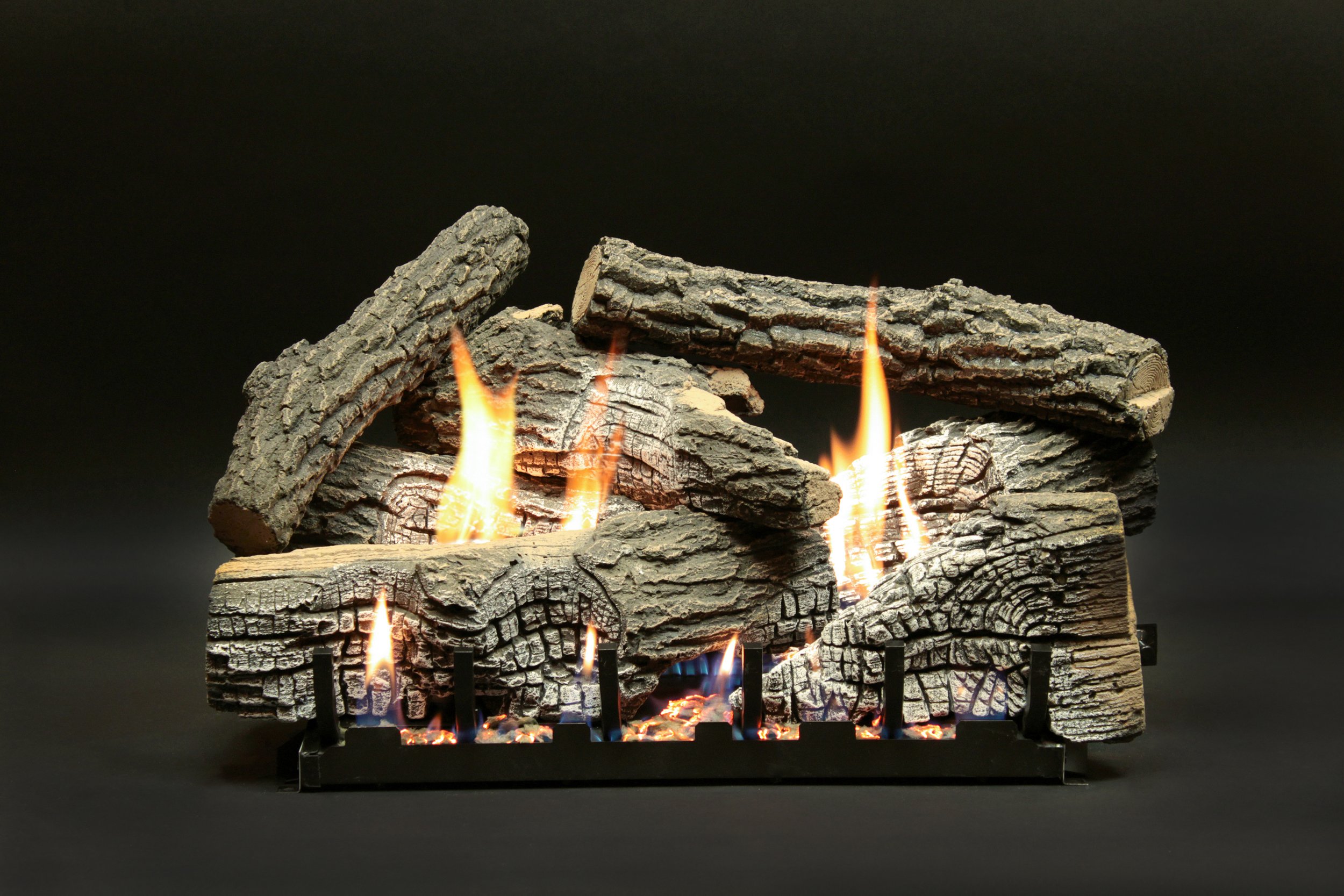Exploring Gas Logs: Vented vs. Vent-Free Options
Gas logs have transformed the way we experience warmth and ambiance in our homes. As an alternative to traditional wood-burning fireplaces, gas logs provide convenience, cleanliness, and customizable aesthetics. In this blog post, we'll delve into the different types of gas logs, particularly the distinction between vented and vent-free options. We'll also introduce you to the Radiant Heat series from Hargrove gas logs and White Mountain Hearth as premium solutions for both vented and vent-free log sets.
Understanding Gas Logs:
Gas logs are realistic-looking fireproof logs designed to mimic the appearance of a wood-burning fire. They provide the charm of a traditional fireplace without the hassle of gathering and storing firewood. Gas logs can be installed in existing fireplaces or specially designed fireboxes, creating a warm and inviting focal point in your home.
Vented Gas Logs: Radiant Warmth and Authenticity
The Hargrove Radiant Heat Series represents the epitome of vented gas log sets. These logs offer a charming and authentic fireplace experience by simulating the appearance of real wood fires. Here's what sets these vented gas logs apart:
Pros:
Realistic Appearance: Vented gas logs provide the most authentic flame appearance, closely resembling a natural wood-burning fire.
Radiant Heat: Unlike traditional vented log sets, they emit radiant heat, effectively warming your living space and creating a cozy atmosphere.
Aesthetics: The flickering flames and glowing embers of vented gas logs enhance the ambiance of your home.
Cons:
Flue Must be Open: Vented gas logs require the chimney flue to be open during operation, which may result in heat loss.
Higher Operating Cost: They are less energy-efficient compared to vent-free logs, potentially leading to higher gas bills.
Vent-Free Gas Logs: Efficient Warmth and Convenience
White Mountain Hearth offers top-tier vent-free gas logs designed to provide efficient heating and versatility. These logs are designed to operate without the need for venting, making them a popular choice for modern homes. Let's explore their pros and cons:
Pros:
Efficient Heating: Vent-free gas logs produce substantial heat and are designed for maximum efficiency.
No Chimney Required: These logs do not require a chimney or flue, offering placement flexibility.
Convenience: Vent-free logs are easy to operate, with most models featuring remote controls for adjusting the thermostat.
Cons:
Possible Flame Impingement: In some cases, flames from vent-free logs can touch the logs, leading to soot buildup and potential odor.
Slight Odor: Vent-free logs may emit a slight odor during initial use, although this usually diminishes over time.
Moisture Content: The combustion process can release water vapor into the air, potentially increasing humidity levels in the room.
Gas logs offer a convenient and customizable way to enjoy the warmth and beauty of a fire without the traditional fireplace maintenance. Vented gas logs, like Hargrove's Radiant Heat series, provide an authentic fireplace experience with radiant warmth. Vent-free gas logs, exemplified by White Mountain Hearth, offer efficient heating and flexibility in placement. Consider the pros and cons of each option to make an informed choice that best suits your home and preferences. At Embers, we offer a selection of premium gas logs to enhance your home's ambiance and comfort.









